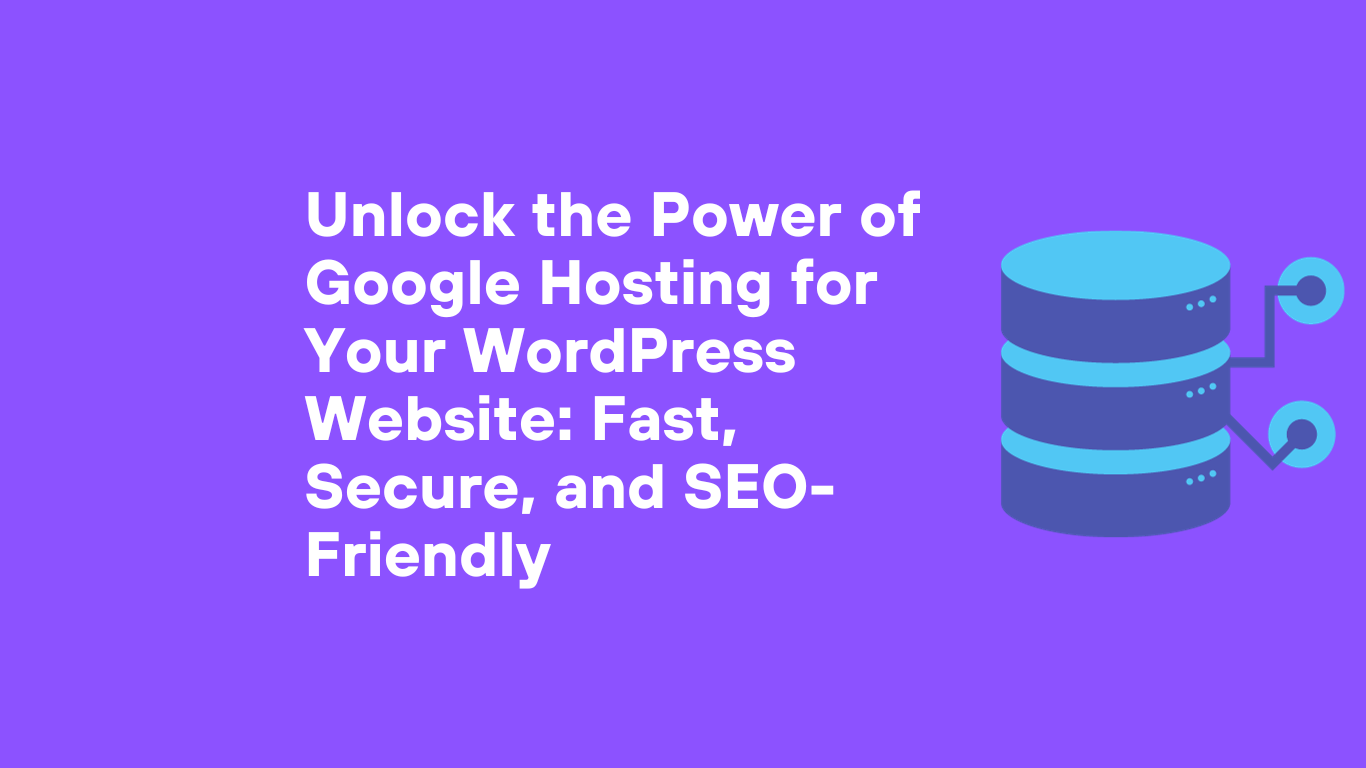Mastering Mobile: The Art of WordPress Mobile Optimization
I. Introduction
WordPress Mobile Optimization: Enhancing User Experience on Every Device
In today’s digital landscape, where mobile devices reign supreme, ensuring that your WordPress website is mobile-optimized has become indispensable to successful web design. With the rapid growth of smartphone and tablet usage, users expect seamless browsing experiences regardless of the device they are using. This is where WordPress mobile optimization comes into play.
WordPress, the popular content management system (CMS), provides powerful tools and features to create stunning websites. However, with proper mobile optimization, your website may meet the demands and expectations of mobile users. By optimizing your WordPress website for mobile devices, you can enhance user experience, boost engagement, and improve conversions.
In this comprehensive guide, we will delve into the art of WordPress mobile optimization, exploring the best practices, tools, and techniques to make your website shine on every screen size. From responsive design principles to performance optimization, we will equip you with the knowledge and skills to master the art of WordPress mobile optimization, ensuring that your website delivers an exceptional user experience across all devices. Let’s embark on this journey and unlock the full potential of your WordPress website in the mobile era.
II. Understanding Mobile Optimization
Mobile optimization is a crucial aspect of WordPress website development in today’s mobile-first world. With an increasing number of users accessing the internet through smartphones and tablets, it is essential to create websites that deliver seamless experiences on all screen sizes. By prioritizing WordPress mobile optimization, you can cater to the needs and preferences of mobile users, boosting engagement and conversions.

To understand mobile optimization, it is essential to grasp the concept of responsive design. WordPress mobile optimization involves implementing responsive design principles, which ensure that your website adapts and adjusts its layout, content, and functionality based on the screen size and orientation of the device being used. This ensures that your website looks and functions flawlessly whether accessed on a smartphone, tablet, or desktop computer.
As a WordPress website developer, mastering mobile optimization means understanding mobile user behavior and expectations. Mobile users tend to have shorter attention spans and higher expectations for speed and usability. By optimizing your WordPress website for mobile, you can provide fast-loading pages, intuitive navigation, and user-friendly interfaces that cater to these preferences, ultimately enhancing the overall user experience.
In addition to user experience benefits, WordPress mobile optimization also contributes to search engine optimization (SEO). Search engines prioritize mobile-friendly websites in their rankings, considering factors such as responsive design, mobile page speed, and mobile user experience. By prioritizing mobile optimization, you can improve your website’s visibility and organic search rankings, driving more traffic and potential customers to your WordPress website.
III. Assessing Your Current Mobile Performance
To optimize your WordPress website for mobile, it is essential to assess its current mobile performance. Various tools and techniques can help you evaluate how well your website performs on different mobile devices. One such tool is Google’s Mobile-Friendly Test, which analyzes your website’s mobile-friendliness and highlights areas that need improvement. Additionally, you can use website analytics to gather data on mobile traffic, bounce rates, and conversion rates, providing insights into user behavior and potential issues.
During the assessment process, it is crucial to focus on website speed and responsiveness on mobile devices. Slow-loading pages and a non-responsive layout can lead to high bounce rates and user frustration. Utilize tools like PageSpeed Insights to analyze your website’s performance and receive suggestions for improvement. By identifying common mobile optimization issues, such as unoptimized images, render-blocking resources, or excessive JavaScript, you can prioritize and address them effectively.
Regularly monitoring and evaluating your website’s mobile performance allows you to identify areas for optimization and measure the impact of your efforts. By keeping a pulse on your website’s mobile performance metrics, you can make data-driven decisions and continuously improve the mobile experience for your WordPress website visitors.
IV. Best Practices for Mobile Optimization in WordPress
When it comes to mobile optimization in WordPress, several best practices can ensure that your website delivers a seamless and engaging mobile experience. First, choose a mobile-friendly WordPress theme that is designed with responsiveness in mind. A responsive theme automatically adjusts its layout and elements to fit different screen sizes, eliminating the need for separate mobile and desktop versions of your website.
Optimizing images is another critical aspect of mobile optimization. Compress and resize images to reduce file sizes without compromising quality. This helps to improve page loading times, especially on slower mobile networks. Additionally, leverage caching plugins like W3 Total Cache or WP Super Cache to store static resources, reducing server load and speeding up page delivery to mobile users.
Designing intuitive and mobile-friendly navigation is vital for enhancing the user experience on small screens. Utilize clear and concise menus, implement touch-friendly buttons, and consider using a sticky header or navigation bar for easy access to important sections of your website. Furthermore, ensure that your content remains readable and legible on mobile devices by using appropriate font sizes, line spacing, and contrasting colors.
Lastly, optimize forms and input fields for mobile use. Streamline the form-filling process by minimizing the number of required fields and utilizing input types that are compatible with mobile devices, such as date pickers or numeric keyboards. This simplifies the user experience and encourages higher form completion rates on mobile devices.
Implementing these best practices in your WordPress mobile optimization strategy will help create a user-friendly and high-performing mobile website that engages and converts mobile visitors effectively.
V. Leveraging WordPress Mobile Plugins and Tools
WordPress offers a vast array of mobile optimization plugins and tools that can simplify the process of optimizing your website for mobile devices. These plugins provide specific functionalities and features to enhance the mobile experience, allowing you to customize and optimize your website without extensive coding knowledge.

One popular mobile optimization plugin is WPtouch, which creates a mobile-friendly version of your WordPress website with a touch-optimized layout. It offers customization options, such as choosing a mobile theme, adjusting colors and fonts, and configuring mobile-specific settings. Another powerful plugin is Jetpack, which includes a mobile theme, site acceleration features, and image optimization capabilities, all geared toward improving the mobile performance of your WordPress website.
In addition to dedicated mobile plugins, several general WordPress plugins can contribute to mobile optimization. Plugins like Autoptimize and WP Smush optimize CSS, JavaScript, and image files, reducing file sizes and improving page load times on mobile devices. Cache plugins such as WP Rocket or W3 Total Cache store and serve static versions of your website, further enhancing mobile performance.
When selecting and installing mobile plugins, ensure compatibility with your WordPress theme and consider the specific needs of your website. Evaluate plugin reviews, update frequency, and developer support to make informed decisions and choose plugins that align with your mobile optimization goals.
By leveraging these WordPress mobile plugins and tools, you can enhance your website’s mobile capabilities, streamline optimization efforts, and deliver an exceptional mobile experience to your visitors.
VI. Testing and Debugging Mobile Optimization
Testing and debugging play a crucial role in ensuring that your WordPress website is effectively optimized for mobile devices. Rigorous testing helps identify any issues or inconsistencies that may affect the user experience on different mobile devices and browsers.
To begin, conduct comprehensive cross-browser and cross-device testing to ensure your website looks and functions as intended on a wide range of devices, including smartphones, tablets, and even wearable devices. Use emulators, simulators, and real devices to assess responsiveness, layout, and functionality across various screen sizes and resolutions.
A/B testing can also be beneficial when optimizing your WordPress website for mobile. By creating multiple variations of your mobile layout or design and testing them with different segments of your audience, you can gather data and insights on user preferences, conversion rates, and engagement metrics. This iterative approach allows you to make data-driven decisions and continuously refine your mobile optimization strategy.
During the testing phase, pay attention to common mobile optimization issues such as broken or misaligned elements, slow loading times, or any features that may not work as expected on mobile devices. Debugging these issues may involve revising CSS styles, optimizing JavaScript code, or adjusting responsive design settings.
Regularly test and debug your WordPress website’s mobile optimization to ensure a smooth and consistent experience for mobile users. By addressing any issues promptly, you can provide an exceptional mobile experience and maximize user engagement on your website.
VII. Optimizing Mobile SEO for WordPress
In the realm of WordPress mobile optimization, it is crucial to consider search engine optimization (SEO) for mobile devices. Mobile SEO focuses on improving your website’s visibility and rankings in mobile search engine results pages (SERPs). By following mobile SEO best practices, you can attract more organic traffic from mobile users and enhance the overall mobile user experience.
Start by ensuring that your WordPress website is mobile-friendly according to search engine guidelines. This includes implementing responsive design, optimizing page loading speed, and creating a seamless user experience on mobile devices. Mobile-friendly websites receive preferential treatment in mobile search results, leading to higher visibility and click-through rates.
Optimizing mobile page speed is paramount for mobile SEO. Utilize tools like Google’s PageSpeed Insights to identify areas for improvement and optimize your website’s performance. Compress images, minimize JavaScript and CSS files, and leverage caching mechanisms to reduce load times and provide a faster browsing experience on mobile devices.
Structured data is another essential aspect of mobile SEO. Implement schema markup to provide search engines with structured information about your website’s content. This helps search engines better understand and present your website’s information in mobile search results, leading to improved visibility and user engagement.
Lastly, optimize your mobile sitemap to ensure that search engines crawl and index your mobile pages effectively. Submit your mobile sitemap to search engines through their respective webmaster tools, allowing them to discover and rank your mobile-optimized content appropriately.
By incorporating these mobile SEO strategies into your WordPress mobile optimization efforts, you can increase your website’s visibility in mobile search results and attract targeted organic traffic from mobile users.
VIII. Future Trends and Considerations
As technology continues to evolve, the landscape of mobile optimization in WordPress will also witness new trends and considerations. Staying updated with these emerging trends and adapting to evolving user behavior is crucial for maintaining a competitive edge in the mobile-first era.
One notable trend is the rise of voice search. With the proliferation of voice-enabled devices and virtual assistants, optimizing your WordPress website for voice search queries will become increasingly important. This involves adapting content to align with conversational and long-tail search queries and ensuring that your website provides concise, relevant answers to voice-based queries.
The increasing popularity of wearable devices presents another consideration for mobile optimization. As more users access the internet through smartwatches, fitness trackers, and other wearable devices, ensuring that your website delivers a seamless and optimized experience on these small screens will become imperative. Responsive design and streamlined user interfaces will be essential to accommodate the unique requirements of wearable devices.
Additionally, the continued emphasis on user experience and accessibility will shape the future of mobile optimization. Optimizing accessibility, including considerations for users with disabilities, will become standard practice. Providing intuitive navigation, fast-loading pages, and engaging mobile experiences will remain key priorities.
IX. Conclusion
In conclusion, mastering mobile optimization in WordPress is essential for creating exceptional user experiences, improving search engine visibility, and staying ahead in the mobile-first era. By understanding the significance of mobile optimization and following best practices, such as responsive design, image optimization, and streamlined navigation, you can ensure that your WordPress website performs flawlessly on mobile devices.
Leveraging mobile plugins and tools, testing, and debugging, optimizing mobile SEO, and staying updated with emerging trends will further enhance your mobile optimization efforts. By continuously refining and optimizing your WordPress website for mobile devices, you can provide a seamless and engaging experience to mobile users, boost conversions, and thrive in the ever-evolving mobile landscape. Embrace the art of WordPress mobile optimization and unlock the full potential of your website in the mobile era.








